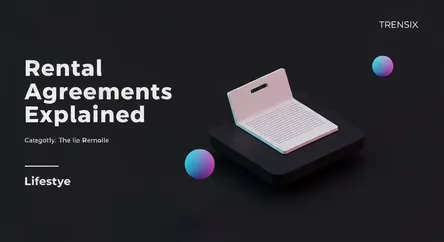Lifestyle
Rental Agreements Explained

Understand the essentials of a rental agreement, the legal document outlining the terms between a landlord and tenant. Learn why it's crucial.
What is it?
A rental agreement, or lease, is a legally binding contract between a landlord and a tenant. It specifies the terms and conditions of a property rental, including the duration of the tenancy, the monthly rent amount, payment due dates, and rules regarding the property's use. This document outlines the responsibilities of both parties, covering everything from maintenance and repairs to policies on pets and security deposits. It serves as the foundational legal framework for the entire landlord-tenant relationship, ensuring both sides understand their obligations and rights.
Why is it trending?
With fluctuating housing markets and rising rental costs globally, there's a heightened focus on housing security and legal protection. More people are renting for longer periods, making the terms of their tenancy critically important. Online searches for rental agreements are surging as both new and experienced renters and landlords seek to understand their legal standing. This trend is fueled by a greater awareness of tenant rights and the desire to avoid common rental disputes, from security deposit disagreements to eviction proceedings, by having a clear, written contract.
How does it affect people?
A well-drafted rental agreement provides stability and protection. For tenants, it secures their right to occupy the property for a specified term and outlines the landlord's obligations for maintaining a habitable living space. It prevents arbitrary rent increases or sudden evictions. For landlords, it protects their investment by ensuring a consistent income stream and setting clear rules for property care. It provides a legal basis for action if a tenant violates the terms, such as by causing damage or failing to pay rent. Ultimately, it minimizes misunderstandings and fosters a more professional relationship.